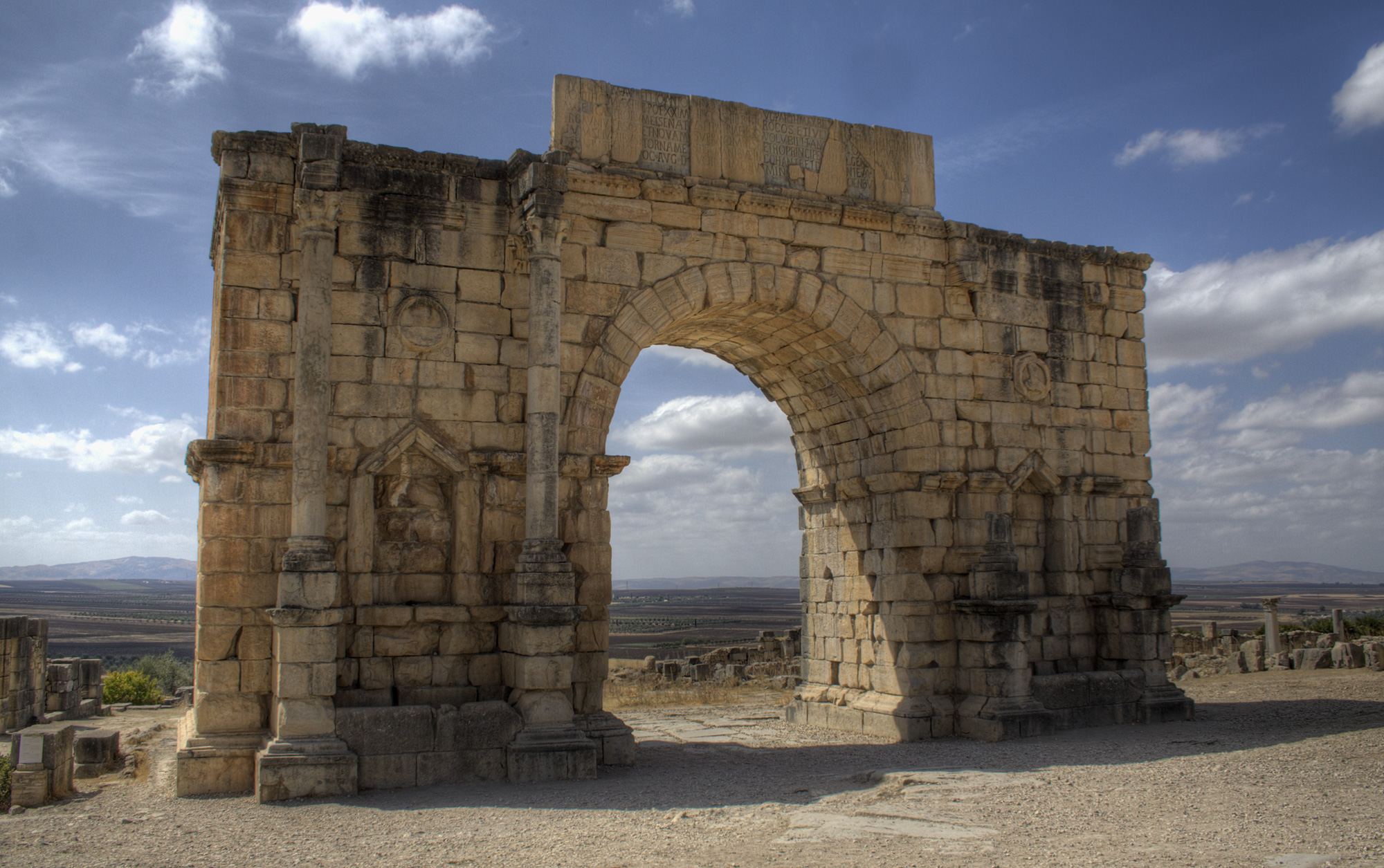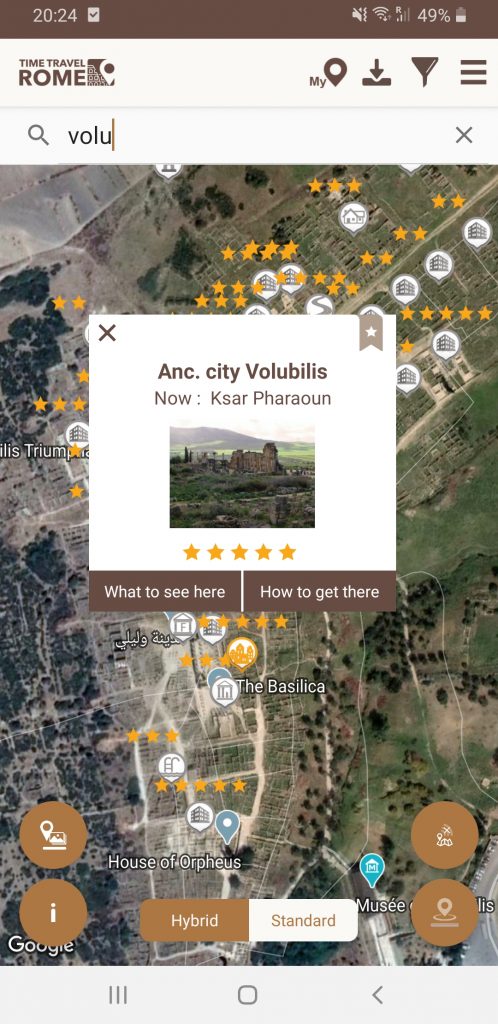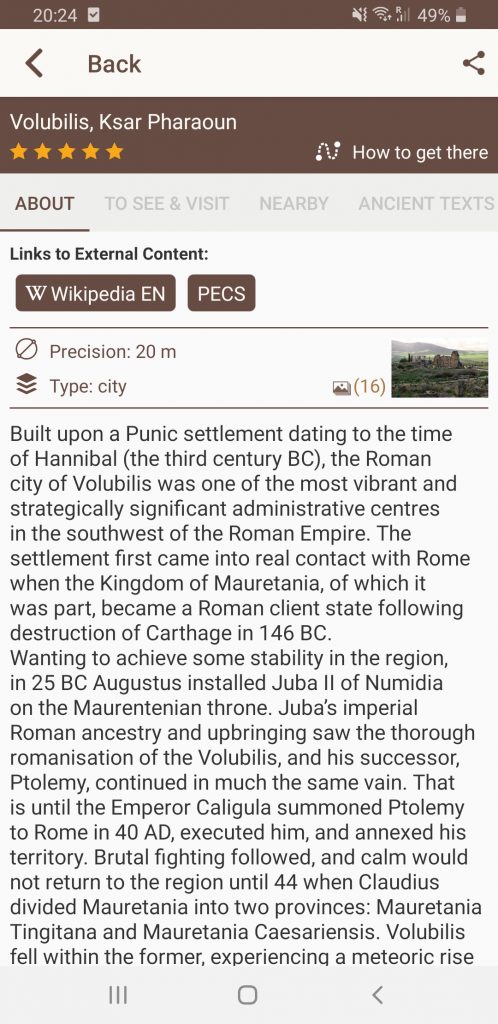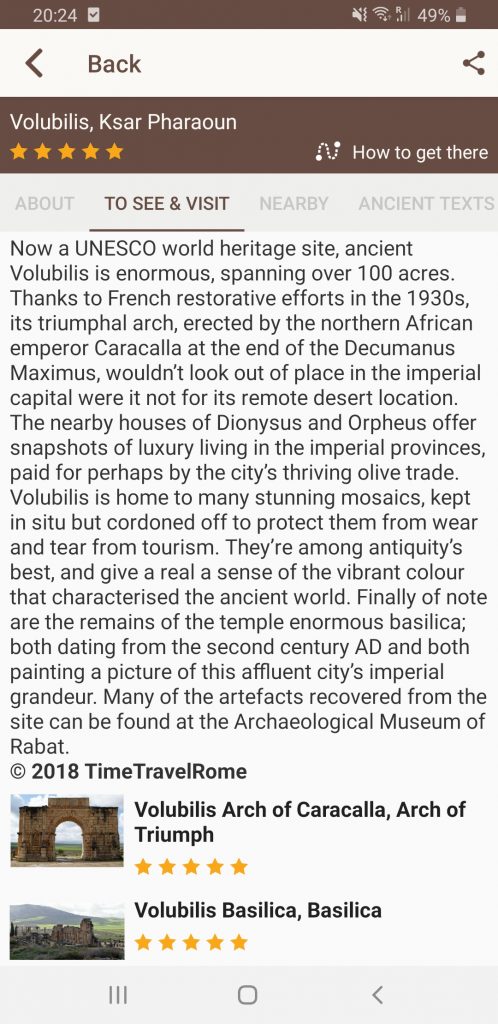Author: Marian Vermeulen
Today, the name of Caracalla is most often associated with the magnificent baths in Rome that bear his name. However, in his own era, Caracalla was known as an unpredictable and dangerous ruler. Some of his opponents nicknamed him “beast.” Though they gave him the name in derision, Caracalla embraced it eagerly. Even the name by which we know him, Caracalla, is a nickname referring particular cloak that he wore. The nickname remained more closely associated to the man because after his death his contemporaries refused to continue calling him Antoninus, finding him unworthy of the name that had first belonged to one of Rome’s most gentle and beloved emperors.
The only citizens who maintained a fondness for Caracalla were those of the African provinces, to whom Caracalla granted Roman citizenship, as can be seen in the Arch of Caracalla in Volubilis, addressed in honor of the “pious, fortunate Augustus.” Volubilis is itself an extraordinary site, a Berber city believed to be the ancient capital of Mauretania. It was a thriving city under Roman rule, as easily evidenced by the stunning ruins and beautiful mosaics that remain.
A Tragic Fratricide
CarCaracalla was the eldest son of Septimius Severus. Severus had been a well-respected leader, ruthless when needed but decidedly fair, and a devotedly hard worker. Even on his deathbed, he reportedly gasped, “come, give it to us, if we have anything to do!” Severus died in Eboracum in Britain, and his last words were advice to his sons, “Be harmonious, enrich the soldiers, scorn everybody else.” Unfortunately his sons could not manage to follow the first suggestion. Caracalla had wanted to murder his brother, Geta, for some time, but was unable to do so before Severus and the army, who were quite fond of the young man. Now, as joint leaders of the world, the two brothers circled one another cautiously, both suspecting plots on the part of the other.
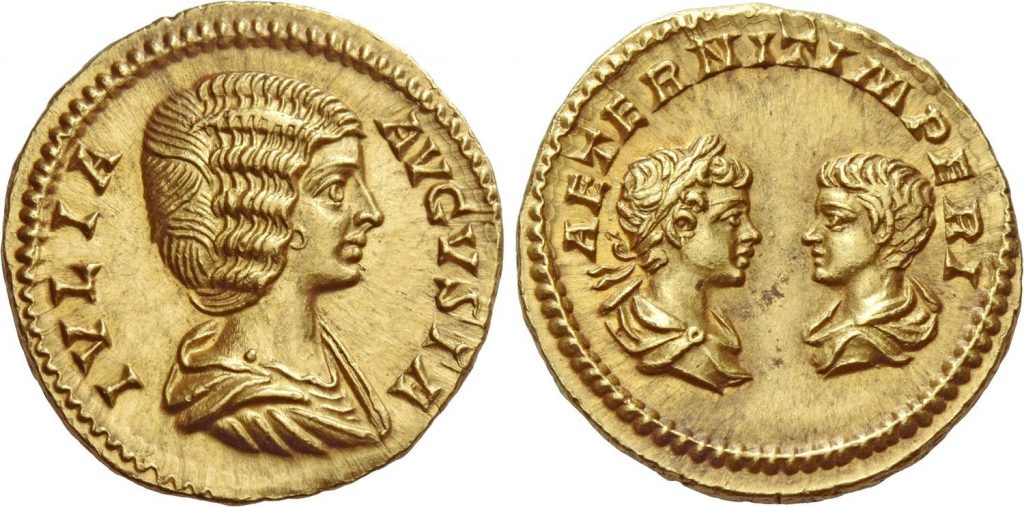
The suspicion proved justified in one direction, for Caracalla concocted several schemes to kill his brother, initially without success. Finally, he convinced their mother, Julia Domna, to summon his brother to a meeting, feigning a sincere desire for reconciliation. Julia believed him, and called Geta to her. Though he would not meet alone with his brother, Geta thought himself safe if the meeting was to be mediated by his mother, and so he attended. When they were inside the house, a number of soldiers loyal to Caracalla rushed in. Seeing them, Geta understood what was to come, and he ran to his mother, clinging to her neck and begging her to help him. He was only twenty-two years old, and was slain in the arms of his mother.
Mother and Brother
Julia, covered in the blood of her youngest and surrounded by his murderers, could not even mourn, but was forced to celebrate with Caracalla as if the violent murder was a great gift. Despite this injustice done to her, Caracalla seemed genuinely fond of his mother, and she was apparently the only person that he truly trusted. Though he grew increasingly paranoid and violent, she could still give him advice without fearing for her own safety. Caracalla insisted that her name be included in the invocations of the Senate, and placed her in charge of more and more administrative work. During his later campaigns, he ordered that all correspondence be sent first to his mother, who attended to the lesser business and sent only the most important communications onto the emperor.
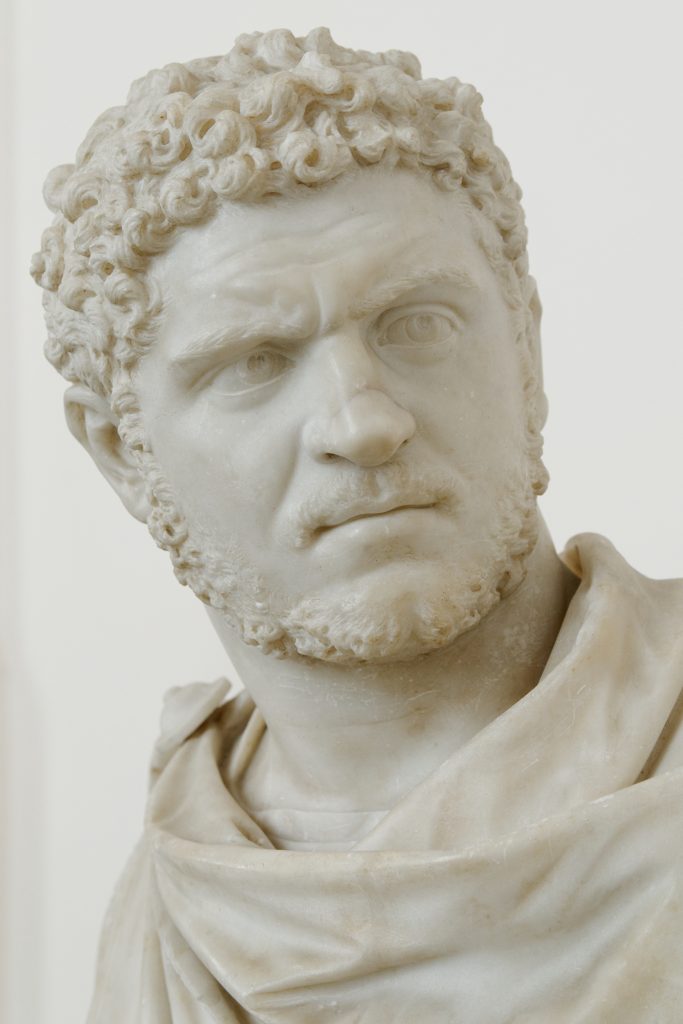
For his brother’s memory, he had no such respect. He executed over twenty thousand of his brother’s supporters, and forbid any person from saying the name, whether referring to his brother or not, upon pain of death. The name Geta had been a popular one among poets and playwrights, as it had originally been a common name among slaves. Even those who had other men named Geta in their wills were killed for daring to write the name. Caracalla would become enraged at the sight of his brother’s image, melted down any coins bearing Geta’s likeness, and took great delight when two brothers ruling jointly in other nations began to quarrel. Later, while in the city of Alexandria, he practically lived in the Alexandrian Serapeum, and even dedicated the sword he had used to murder Geta to the god Serapis.
To Enrich and Scorn
Though he had ignored the first portion of his father’s advice, Caracalla readily embraced the second two-thirds. Immediately following his murder of his brother, he addressed the soldiers and dazzled them with so many gifts and promises of wealth that they overlooked the death of their formerly beloved young commander. In one instance, when his mother rebuked him for the amount of money he was spending, he showed her his sword and assured her that as long as they had that, they need never worry about money. Yet he did not only ingratiate himself among the soldiers with rewards, but also with his actions. In one of his only admirable qualities, he refused to put on airs during campaigns, instead walking, running, and working alongside his soldiers, bathing and eating only when they did, and partaking of the same fare that they received.
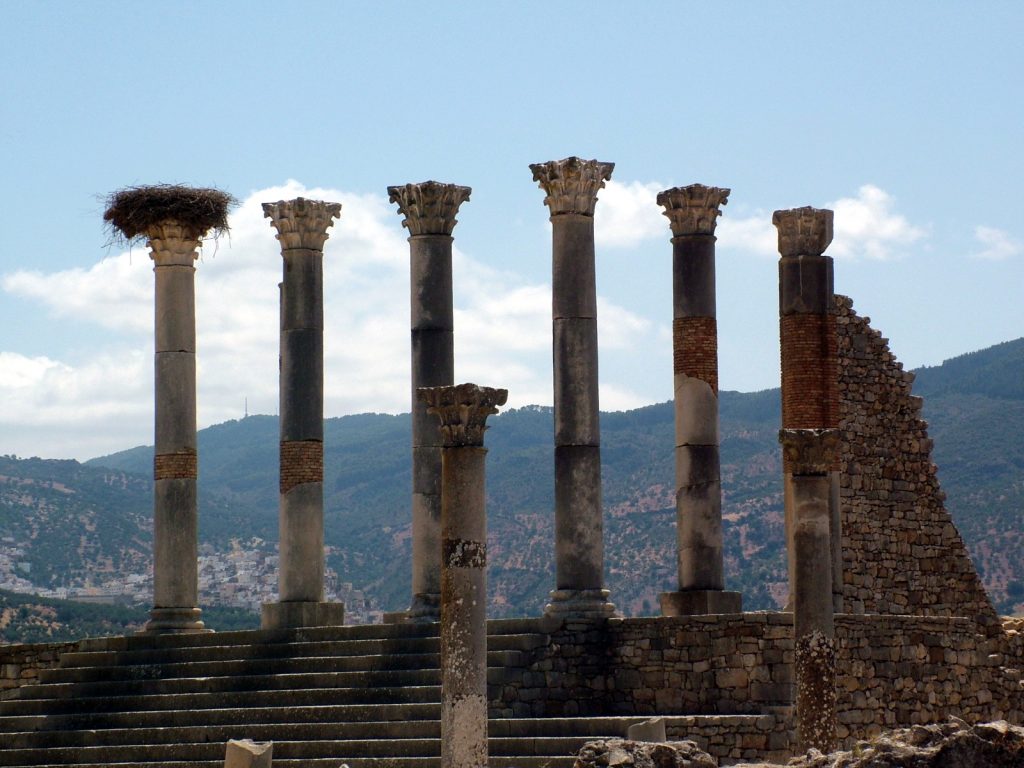
He also successfully “scorned everyone else,” for though he lavished wealth upon his soldiers and respected his mother, there was no one else that he truly trusted or admired. Even those that he purported to love were often simply being set up for his retribution. He executed untold numbers during his reign, and often deviously used political postings as a weapon, sending men to provinces that he knew they were unsuited to handle, or possibly even would be detrimental to their health. Cassius Dio said of him that he was descended from three races, but had inherited none of the good qualities of each, but rather all the worst, “the lightness, cowardice, and recklessness of the Gauls, the roughness and cruelty of Africa, and the abominations of Syria.”
A Murderous End
Caracalla conceived of a deep admiration, even obsession, with Alexander the Great, though he seems to have emulated only the conqueror’s worst qualities and none of those that had made him great. He promoted one Macedonian man named Antigonus, whose father had been called Philip, simply on the basis of the name, and exonerated another, a base criminal, simply because the man’s name was Alexander. Caracalla also turned his hatred upon Aristotelian philosophers, due to the weak rumor that Aristotle had been involved in Alexander’s death. He even reorganized part of the Roman army into a traditional Macedonian phalanx, despite the fact that Romans had soundly counteracted that particular fighting style in their conflicts with the Hellenistic Empires that had arisen from Alexander’s generals.
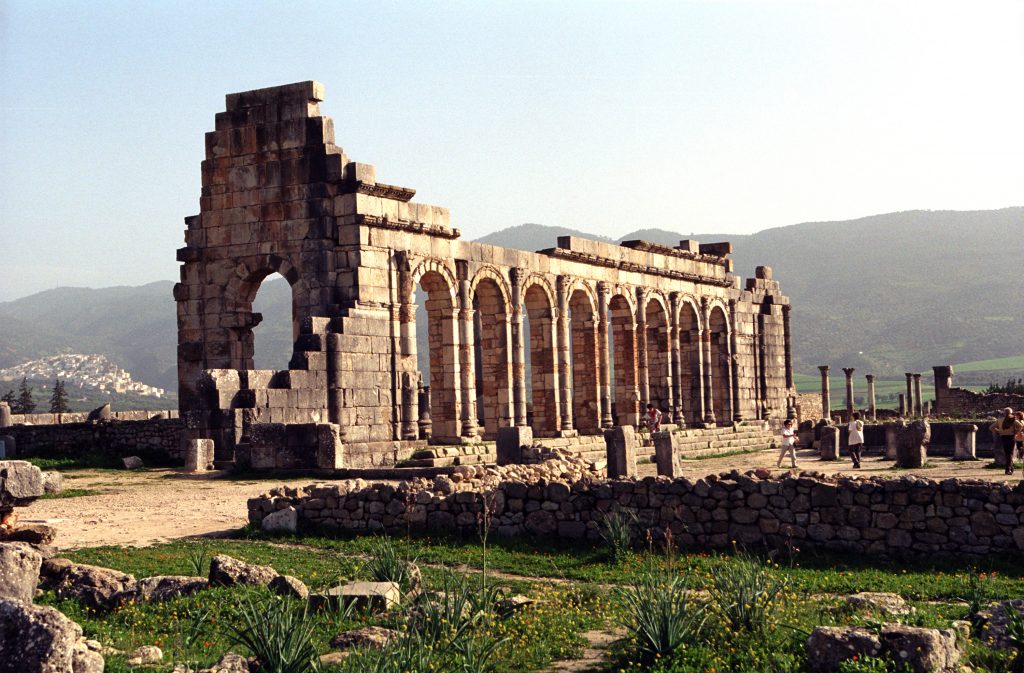
Even worse, Caracalla had little skill in how to use any of his army, and often engaged in deception rather than outright war. The intrinsic quality of his soldiers enabled him to still win victories, which only added to his arrogance. Yet he was perpetually paranoid, haunted by dreams and visions. He even attempted to summon the spirits of his father and ancestors, and though he claimed to have seen those he summoned, only Commodus, the murdered, brutal son of Marcus Aurelius would actually speak to him. He had to abandon his summoning in terror after Geta appeared in attendance to Severus. Eventually, Caracalla was murdered by a member of his own Praetorian Guard, Julius Martialius, over a private grudge. He stabbed Caracalla while the emperor was relieving himself on the road to Carrhae.
What to See in Volubilis now ?
Now a UNESCO world heritage site, ancient Volubilis is enormous, spanning over 100 acres. Thanks to French restorative efforts in the 1930s, its triumphal arch, erected by the northern African emperor Caracalla at the end of the Decumanus Maximus, wouldn’t look out of place in the imperial capital were it not for its remote desert location. The nearby houses of Dionysus and Orpheus offer snapshots of luxury living in the imperial provinces, paid for perhaps by the city’s thriving olive trade.
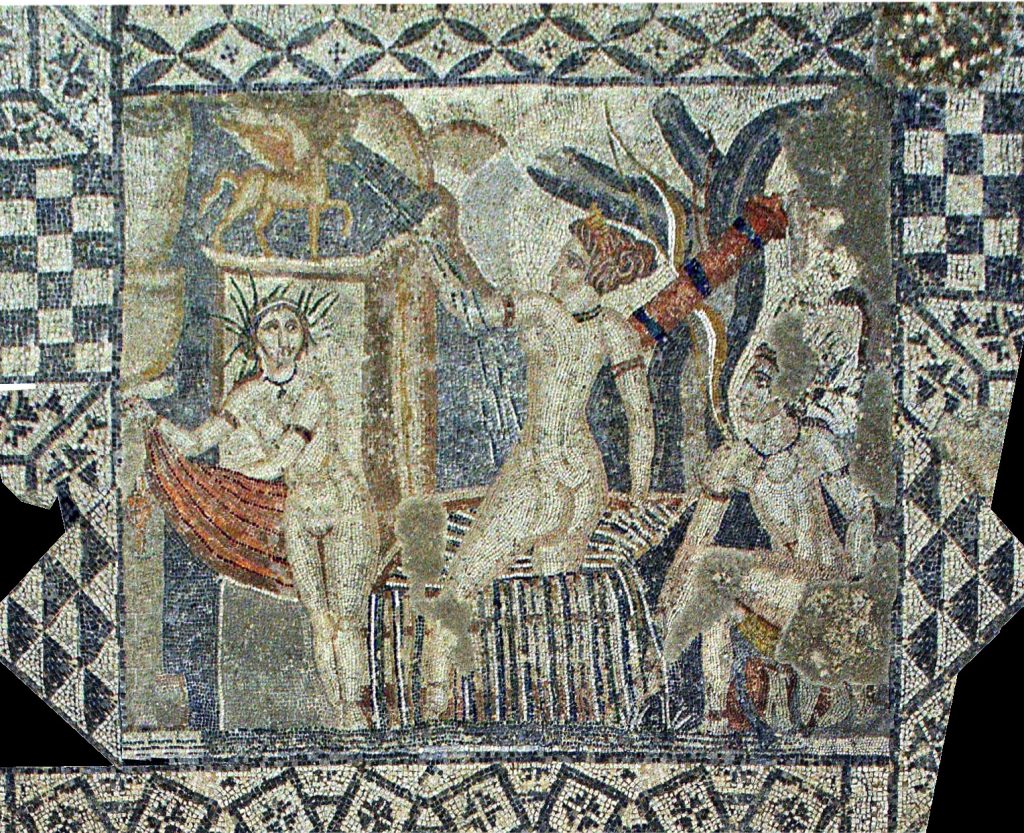
Volubilis is home to many stunning mosaics, kept in situ but cordoned off to protect them from wear and tear from tourism. They’re among antiquity’s best, and give a real a sense of the vibrant colour that characterised the ancient world. Finally of note are the remains of the temple enormous basilica; both dating from the second century AD and both painting a picture of this affluent city’s imperial grandeur. Many of the artifacts recovered from the site can are on display at the Archaeological Museum of Rabat.
Volubilis on Timetravelrome App:
Our mobile app offers a complete guide to the ancient Volubilis: 22 monuments are located on the map and described in detail.
Author: Marian Vermeulen for Timetravelrome
Header image: The Arch of Caracalla at Volubilis, picture by Prioryman, licensed under CC BY-SA 3.0.
